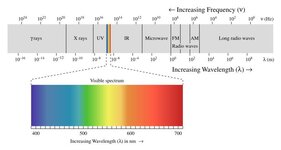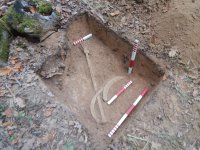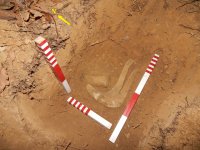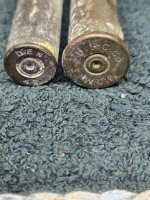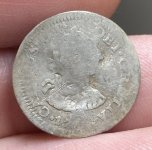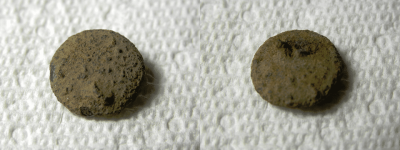- Nov 24, 2006
- 15,916
- 24,106
- Detector(s) used
- Nokta Simplex, Land Ranger Pro, Quick Draw Pro, Deteknix XPointer
- Primary Interest:
- Metal Detecting
Here's the best detector for the money
Now that I have your attention, let me start by saying I am giving this post for the new person that appears to be confused by the choice of the right detector in an ocean of choices. I am providing the information that I have gathered for the few months I have scoured the Internet and local tradesmen for which detector holds the best promise in detecting for the newbie. Veterans in the field may or may not agree with my assessment, but that is fine because I do not profess to be a professional, just a common sense individual that is attempting to clear up the confussion with the hundreds of opinions and field tests gathered on my own quest of "What is the best detector". Again, these are only my opinions.
The first thing is to find what it is you want to detect. Coins, relics, cache's, gold, or all over the above. The more choices you make, the more digging you are going to do. The frequency used by the detector has a lot to do with what you are trying to find. A 6 or 7.5kHz frequency does a better job of picking up larger objects, and the higher the frequency, the better chance you have at picking up smaller objects, like a small gold nugget. Some gold detectors use 48kHz to zero in on the smallest of gold particles, but would have a hard time IDing a coin. But it is the receiver part of the coil that determines the depth. I have found that 14kHz to 17kHz is a good average for picking up most treasure without sacrificing the detectors ability to ID. The spectrum is broad enough to get everthing from iron to gold to coins equally.
There are many "gimmicks" being used by detector companies to entice the sales of their detectors. Whites and Mindlab use a numerical display of the metals consistency, Garrett uses a visual display of "true depth and image", Tesoro and Fisher use VCO (sound variance) to the table and some even combine a few of these together to help in determining what is in the ground below. In regards to a visual ID, the processor is trying to determine if the signal received matches the information it has on a particular image it possesses in it's memory. Though many companies has tried to fine tune this ability, it is only about 80% accurate at most, unless the coin is laying flat with no other signals to interfer with its diagnosis. Most letters and posts I have read about complaints of Iding say "Id said coin, it was a pull tab". People spend a lot of money trying to buy a machine that just tells them exactly what to dig and what not to dig. But the eventual answer is "dig everything" or "when in doubt, dig". If this is the case, why spend the money on the VDI or GTI? My personal opinion is that the LCD displays use battery life faster and I personally don't like moving my head back and forth, like I'm at a tennis match, trying to use this feature. Plus, in most cases, the display jumps around so much, it's hard to ID so I "just dig it". I have found that sound is still the best identifier. You are actually listening to the field distortion, and it is faster. The processor, in the end, is using this signal to give you the ID display anyways. The biggest part of using sound is, you have to learn more what it is telling you. You are the "processor" and not the machine, in the case of IDing. I prefer to learn using sound over the expensive and questionable GTI and VDI method. One point to make here, is that the 4 tone sound on some VDI detectors are a definite plus, and the newer Matrix M6 by Whites will probably start a trend on using sound to a greater degree just as 4 and 5 speed auto transmissions have left the older 3 speeds in the dust.
Price comes into play for everything. But value to product can make or break ones experience in the treasure field. There are those that will start off with the expensive "do it all" detectors at $1000 plus thinking they will make their money back and more finding the Holy Grail of coins. Then there are those that will buy the $129 Chinese made detectors thinking that the add says they are "perfect" for finding the gold at the end of the rainbow. The best question one should ask him/herself is "how much of my time and money am I willing to put into this hobby, and what do I expect out of it?". If you read some article that someone found a diamond ring with $26,000 and yours is out there for the taking, your setting tourself up for a big disappointment. The odds of running out with a DFX and finding a treasure in a week are two are stacked against you........heavily. It takes time to become one with any detector to know what your new friend is trying to tell you. And just for the record, a person with a $239 Tesoro Silver uMax can find that treasure faster and easier if he know his machine and you don't know yours. You see, I have figured out that if you have a machine that gives good depth, good ground balance, and a good reliable sound, that is really all that is needed to find any metal under the ground. After working with 5 different detectors in the last few months, I have opted to buy the Tesoro Vaquero. My belief is:
1. I can use sound to its greatest degree. The option of VCO in discrimination and having a threshold tone lets me see more with my minds eye than a jumping display of segments and numbers. I can choose to run silent, if I wish.
2. I adjust the ground balance. Some would complain that in an area of different mineralized soils, you have to keep adjusting it ever so often. I really don't care, because I want maximum depth and stability. So I am willing to make those changes when and if I need to.
3. I don't hunt in a group, but if I did, its nice to know I can change frequency.
4. 14kHz is ideal for all metals, except the really tiniest of gold nuggets.
5. Guaranteed for Life.
6. Lightweight.
7. Supertune mode for maximum depth.
8. I can hunt at night, since I don't need a display.
And it's $420. My feeling is, if I can see the field created by the coil in my mind from listening to the sounds, I don't need the display.
Case in point:
The Garrett size display requires you to scan back and forth over the metal hit to give you a reference to its size to display on the screen. Could this not be done with VCO and the sound being maintained while it is moving over the hit? A tin can will keep the tone high and loud for the 5" scan of the can.
And the depth meters only work on coins.
With all this said, if all you want to do is go after buried coins, most detectors will do that. Because coins reside at the top end of the discrimination scale, any detector will find a coin. And the 6kHz frequency is great for that purpose. But if you want more treasure than just coins, you are going to have to work much harder for it.
This is my opinion. And my Garrett 250 with 3 coils, showing it is all I need in my profile, will change.
Dan
Now that I have your attention, let me start by saying I am giving this post for the new person that appears to be confused by the choice of the right detector in an ocean of choices. I am providing the information that I have gathered for the few months I have scoured the Internet and local tradesmen for which detector holds the best promise in detecting for the newbie. Veterans in the field may or may not agree with my assessment, but that is fine because I do not profess to be a professional, just a common sense individual that is attempting to clear up the confussion with the hundreds of opinions and field tests gathered on my own quest of "What is the best detector". Again, these are only my opinions.
The first thing is to find what it is you want to detect. Coins, relics, cache's, gold, or all over the above. The more choices you make, the more digging you are going to do. The frequency used by the detector has a lot to do with what you are trying to find. A 6 or 7.5kHz frequency does a better job of picking up larger objects, and the higher the frequency, the better chance you have at picking up smaller objects, like a small gold nugget. Some gold detectors use 48kHz to zero in on the smallest of gold particles, but would have a hard time IDing a coin. But it is the receiver part of the coil that determines the depth. I have found that 14kHz to 17kHz is a good average for picking up most treasure without sacrificing the detectors ability to ID. The spectrum is broad enough to get everthing from iron to gold to coins equally.
There are many "gimmicks" being used by detector companies to entice the sales of their detectors. Whites and Mindlab use a numerical display of the metals consistency, Garrett uses a visual display of "true depth and image", Tesoro and Fisher use VCO (sound variance) to the table and some even combine a few of these together to help in determining what is in the ground below. In regards to a visual ID, the processor is trying to determine if the signal received matches the information it has on a particular image it possesses in it's memory. Though many companies has tried to fine tune this ability, it is only about 80% accurate at most, unless the coin is laying flat with no other signals to interfer with its diagnosis. Most letters and posts I have read about complaints of Iding say "Id said coin, it was a pull tab". People spend a lot of money trying to buy a machine that just tells them exactly what to dig and what not to dig. But the eventual answer is "dig everything" or "when in doubt, dig". If this is the case, why spend the money on the VDI or GTI? My personal opinion is that the LCD displays use battery life faster and I personally don't like moving my head back and forth, like I'm at a tennis match, trying to use this feature. Plus, in most cases, the display jumps around so much, it's hard to ID so I "just dig it". I have found that sound is still the best identifier. You are actually listening to the field distortion, and it is faster. The processor, in the end, is using this signal to give you the ID display anyways. The biggest part of using sound is, you have to learn more what it is telling you. You are the "processor" and not the machine, in the case of IDing. I prefer to learn using sound over the expensive and questionable GTI and VDI method. One point to make here, is that the 4 tone sound on some VDI detectors are a definite plus, and the newer Matrix M6 by Whites will probably start a trend on using sound to a greater degree just as 4 and 5 speed auto transmissions have left the older 3 speeds in the dust.
Price comes into play for everything. But value to product can make or break ones experience in the treasure field. There are those that will start off with the expensive "do it all" detectors at $1000 plus thinking they will make their money back and more finding the Holy Grail of coins. Then there are those that will buy the $129 Chinese made detectors thinking that the add says they are "perfect" for finding the gold at the end of the rainbow. The best question one should ask him/herself is "how much of my time and money am I willing to put into this hobby, and what do I expect out of it?". If you read some article that someone found a diamond ring with $26,000 and yours is out there for the taking, your setting tourself up for a big disappointment. The odds of running out with a DFX and finding a treasure in a week are two are stacked against you........heavily. It takes time to become one with any detector to know what your new friend is trying to tell you. And just for the record, a person with a $239 Tesoro Silver uMax can find that treasure faster and easier if he know his machine and you don't know yours. You see, I have figured out that if you have a machine that gives good depth, good ground balance, and a good reliable sound, that is really all that is needed to find any metal under the ground. After working with 5 different detectors in the last few months, I have opted to buy the Tesoro Vaquero. My belief is:
1. I can use sound to its greatest degree. The option of VCO in discrimination and having a threshold tone lets me see more with my minds eye than a jumping display of segments and numbers. I can choose to run silent, if I wish.
2. I adjust the ground balance. Some would complain that in an area of different mineralized soils, you have to keep adjusting it ever so often. I really don't care, because I want maximum depth and stability. So I am willing to make those changes when and if I need to.
3. I don't hunt in a group, but if I did, its nice to know I can change frequency.
4. 14kHz is ideal for all metals, except the really tiniest of gold nuggets.
5. Guaranteed for Life.
6. Lightweight.
7. Supertune mode for maximum depth.
8. I can hunt at night, since I don't need a display.
And it's $420. My feeling is, if I can see the field created by the coil in my mind from listening to the sounds, I don't need the display.
Case in point:
The Garrett size display requires you to scan back and forth over the metal hit to give you a reference to its size to display on the screen. Could this not be done with VCO and the sound being maintained while it is moving over the hit? A tin can will keep the tone high and loud for the 5" scan of the can.
And the depth meters only work on coins.
With all this said, if all you want to do is go after buried coins, most detectors will do that. Because coins reside at the top end of the discrimination scale, any detector will find a coin. And the 6kHz frequency is great for that purpose. But if you want more treasure than just coins, you are going to have to work much harder for it.
This is my opinion. And my Garrett 250 with 3 coils, showing it is all I need in my profile, will change.
Dan
Upvote
0



